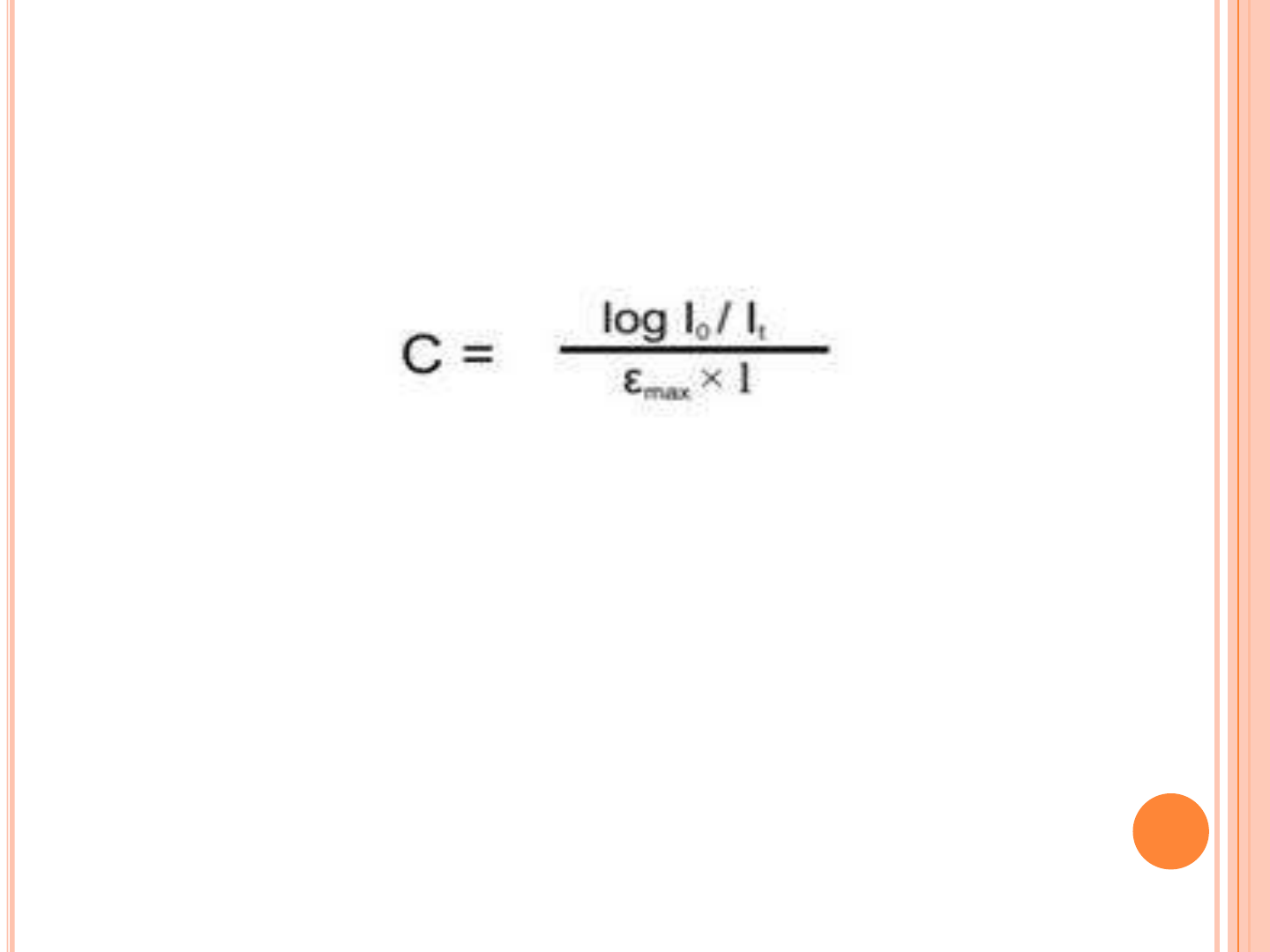
Seminar on Applications of U.V.
Spectroscopy
Submitted by:
Manish Kumar
M.Pharm (Pharmacology)
Submitted to:
Mr. Rambabu Tripathi
Department of Pharmacy , Institute of Bio-Medical Education &
Research, Mangalayatan university Beswan, Aligarh

INTRODUCTION:
The word spectroscopy implies that we will use the
electromagnetic spectrum to gain information about
organic molecules. The modifier ultraviolet means that
the information will come from a specific region of the
electromagnetic spectrum called the ultraviolet region
(190 to 400 nm U.V. Region and 400 to 800 nm
Visible Region) .

1. Detection of Impurities
UV absorption spectroscopy is one of the best methods for
determination of impurities in organic molecules. Additional
peaks can be observed due to impurities in the sample and it
can be compared with that of standard raw material. By also
measuring the absorbance at specific wavelength, the
impurities can be detected.
APPLICATIONS OF U.V. SPECTROSCOPY:

U.V. SPECTRA OF PARACETAMOL (PCM)

2. Structure elucidation of organic compounds.
UV spectroscopy is useful in the structure elucidation of
organic molecules, the presence or absence of
unsaturation, the presence of hetero atoms.
From the location of peaks and combination of peaks, it can
be concluded that whether the compound is saturated or
unsaturated, hetero atoms are present or not etc.

3. QUANTITATIVE ANALYSIS
UV absorption spectroscopy can be used for the quantitative
determination of compounds that absorb UV radiation. This
determination is based on Beer’s law which is as follows.
A = log I
0
/ I
t
= log 1/ T = – log T = abc = εbc
Where :
ε -is extinction co-efficient,
c- is concentration, and
b- is the length of the cell that is used in UV spectrophotometer.

BEER’S LAW

4. QUALITATIVE ANALYSIS
UV absorption spectroscopy can characterize those
types of compounds which absorbs UV radiation.
Identification is done by comparing the absorption
spectrum with the spectra of known compounds.

U.V. SPECTRA'S OF IBUPROFEN

5. CHEMICAL KINETICS
Kinetics of reaction can also be studied using
UV spectroscopy. The UV radiation is passed through
the reaction cell and the absorbance changes can be
observed.

6. DETECTION OF FUNCTIONAL GROUPS
This technique is used to detect the presence or
absence of functional group in the compound
Absence of a band at particular wavelength
regarded as an evidence for absence of particular
group

BENZENE
TOLUNE

7. QUANTITATIVE ANALYSIS OF PHARMACEUTICAL
SUBSTANCES
Many drugs are either in the form of raw material or
in the form of formulation. They can be assayed by
making a suitable solution of the drug in a solvent and
measuring the absorbance at specific wavelength.
Diazepam tablet can be analyzed by 0.5% H2SO4 in
methanol at the wavelength 284 nm.

8. EXAMINATION OF POLYNUCLEAR HYDROCARBONS
Benzene and Polynuclear hydrocarbons have characteristic spectra
in ultraviolet and visible region. Thus identification of
Polynuclear hydrocarbons can be made by comparison with the
spectra of known Polynuclear compounds.
Polynuclear hydrocarbons are the Hydrocarbon molecule with two
or more closed rings; examples are naphthalene, C
10
H
8
, with two
benzene rings side by side, or diphenyl, (C
6
H
5
)
2
, with two bond-
connected benzene rings. Also known as polycyclic hydrocarbon.

NAPHTHALENE DIPHENYL

9. MOLECULAR WEIGHT DETERMINATION
Molecular weights of compounds can be measured
spectrophotometrically by preparing the suitable derivatives of
these compounds.
For example, if we want to determine the molecular weight of
amine then it is converted in to amine picrate. Then known
concentration of amine picrate is dissolved in a litre
of solution and its optical density is measured at λmax 380 nm.

After this the concentration of the solution in gm moles
per litre can be calculated by using the following formula.
"c" can be calculated using above equation, the
weight "w" of amine picrate is known.
From "c" and "w", molecular weight of amine picrate can
be calculated. And the molecular weight of picrate can be
calculated using the molecular weight of amine picrate.

10. AS HPLC DETECTOR
A UV/Vis spectrophotometer may be used as a
detector for HPLC.


